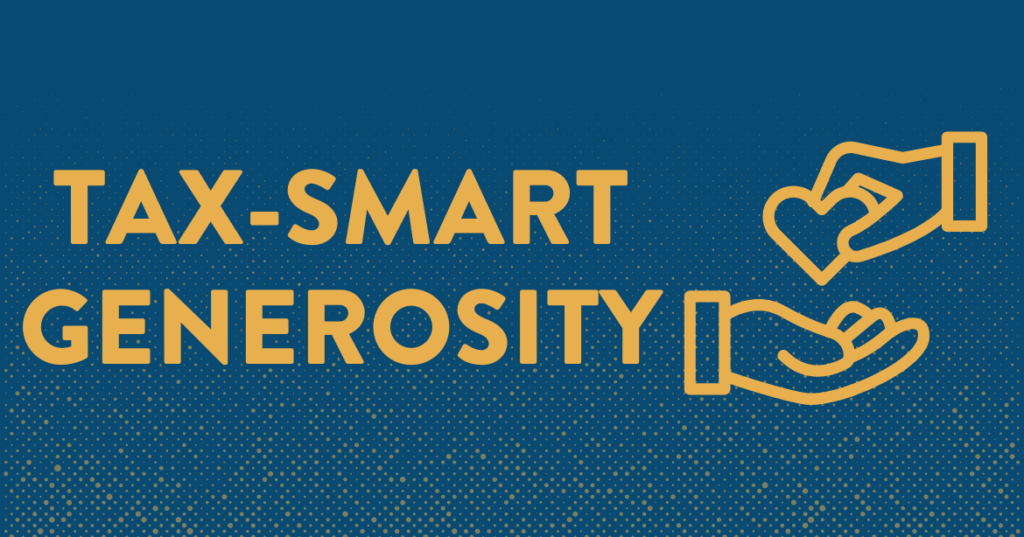What if there was a way to lower your tax bill and give generously to the causes you care about—without jumping through legal hoops or setting up a complicated foundation? There is, and it’s called a Donor Advised Fund (DAF).
This little-known strategy is used by nearly half of high-net-worth individuals and over half of ultra-high-net-worth families.
What Is a Donor Advised Fund?
Think of a DAF as your own personal charitable foundation—without the legal complexity or high costs. It allows you to give more to the causes you care about while maximizing your tax benefits.
Here’s how it works in three simple steps:
Step 1: You donate cash or appreciated assets — like stocks — to the fund.
Step 2: You get an immediate tax deduction this year.
Step 3: You decide later when and to whom you want to send grants.
You can support your church, your alma mater, your favorite nonprofit — any 501(c)(3) you believe in. In the meantime, that money can be invested and grow tax-free, so your giving can go even further.
Why High-Net-Worth Families Love DAFs
So why are so many wealthy individuals and families using Donor Advised Funds? Because they’re flexible, efficient, and fit seamlessly into a bigger financial strategy.
Maybe you’ve had a big income year. Maybe you sold a business. Or maybe you’re holding highly appreciated stock you don’t want to sell because of capital gains taxes. A DAF can help offset that tax hit and let you support the causes that matter most to you.
The Power of Donating Appreciated Assets
Here’s a powerful example: Say you have an appreciated asset currently valued at $100,000. To sell the asset and donate the cash to charity, you would need to pay capital gains tax on the appreciation—let’s say that’s $90,000. You would pay 20% of that, which is $18,000, and the charity would receive the remaining $82,000.
However, by donating the appreciated asset directly to a charity or DAF, you avoid paying the capital gains tax entirely, resulting in a higher payout for the charity at the full $100,000. That’s an extra $18,000 going to the causes you care about instead of to taxes.
And here’s the best part: You can involve your kids or grandkids in the giving process and pass down your values for generations.
Top 4 Benefits of Using a Donor Advised Fund
First, you get a tax deduction right away, even if you don’t know exactly which charities you’ll support yet. This flexibility allows you to capture the tax benefit in a high-income year while taking your time to decide which organizations align best with your giving goals.
Second, your contributions can grow tax-free, giving you more money to give away over time. By investing the funds while they sit in your DAF, you’re essentially amplifying your charitable impact.
Third, you can give anonymously if privacy is important to you. Some donors prefer to keep their philanthropy private, and a DAF makes that simple and straightforward.
Fourth, it’s a fantastic way to build a family legacy of generosity. One of our clients called it a “mission fund”—a place where their values live on, even after they’re gone. You can involve children and grandchildren in deciding which causes to support, teaching them about thoughtful giving and passing down what matters most to your family.
Important Considerations Before Opening a DAF
That said, Donor Advised Funds aren’t right for everyone. Here are a few things to consider:
It’s irrevocable. Once you make the donation, you can’t take it back.
No personal benefits. You can’t receive any personal benefit from the donation—no gala tickets, no dinners, no exceptions.
You must itemize. You have to itemize your deductions to get the tax benefit.
Qualified charities only. Only qualified charities can receive grants from a DAF. That means no GoFundMe pages or political causes.
Fees and minimums vary. Every DAF sponsor has different minimums and fees. For example, the Renaissance Charitable Foundation—one we often work with—requires a $5,000 minimum contribution and charges 0.60% on the first $500,000. There’s also a $250 minimum annual fee. Make sure you know the fine print before you commit.
Understanding Contribution Limits
You can deduct contributions in the year given, but only up to certain amounts. Once you reach the max for that year (60% of AGI for cash contributions, 30% of AGI for appreciated assets), the rest you can carry over for up to five tax years.
How to Get Started with a DAF
Ready to open a Donor Advised Fund? Here’s what the process looks like:
Step 1: Choose a DAF sponsor. We often work with a group called REN, but there are several good options.
Step 2: Open your account. Your financial advisor can help you through this.
Step 3: Fund the account with cash, stock, or other appreciated assets.
Step 4: Recommend grants to the charities you love, whenever you’re ready.
It’s that easy. You stay in control of when and where the funds go—and you can invest the money while it sits, growing tax-free.
If you’re wondering whether a Donor Advised Fund fits into your financial strategy, talk with your advisor. Because generosity isn’t just about giving — it’s about giving well.
*This information is not intended to be a substitute for specific individualized tax or legal advice. We suggest that you discuss your specific situation with a qualified tax or legal advisor.





